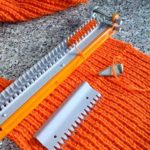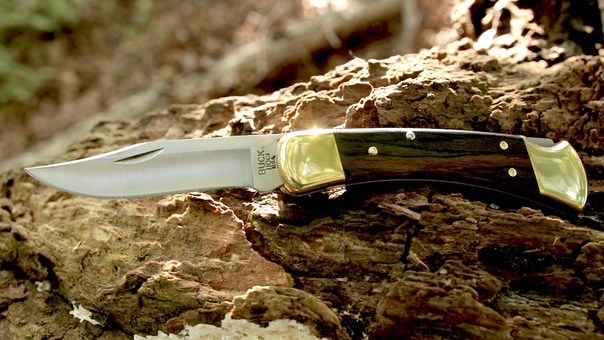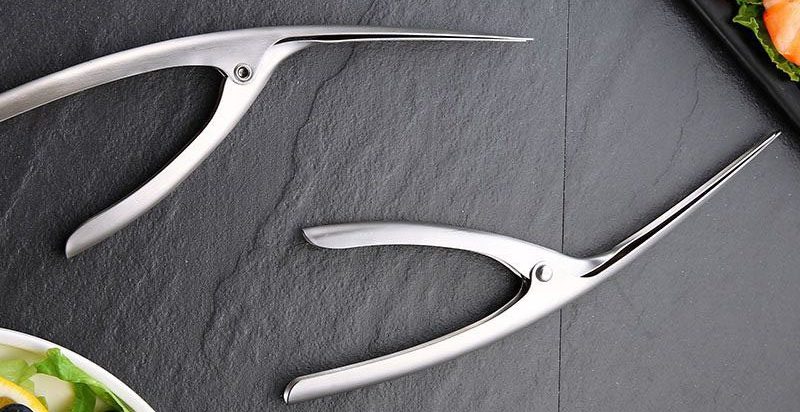Types of kitchen knives and what they are for
The entire variety of kitchen knives can be divided into five types: general purpose, universal, meat, cheese and special. We invite you to familiarize yourself with their features.
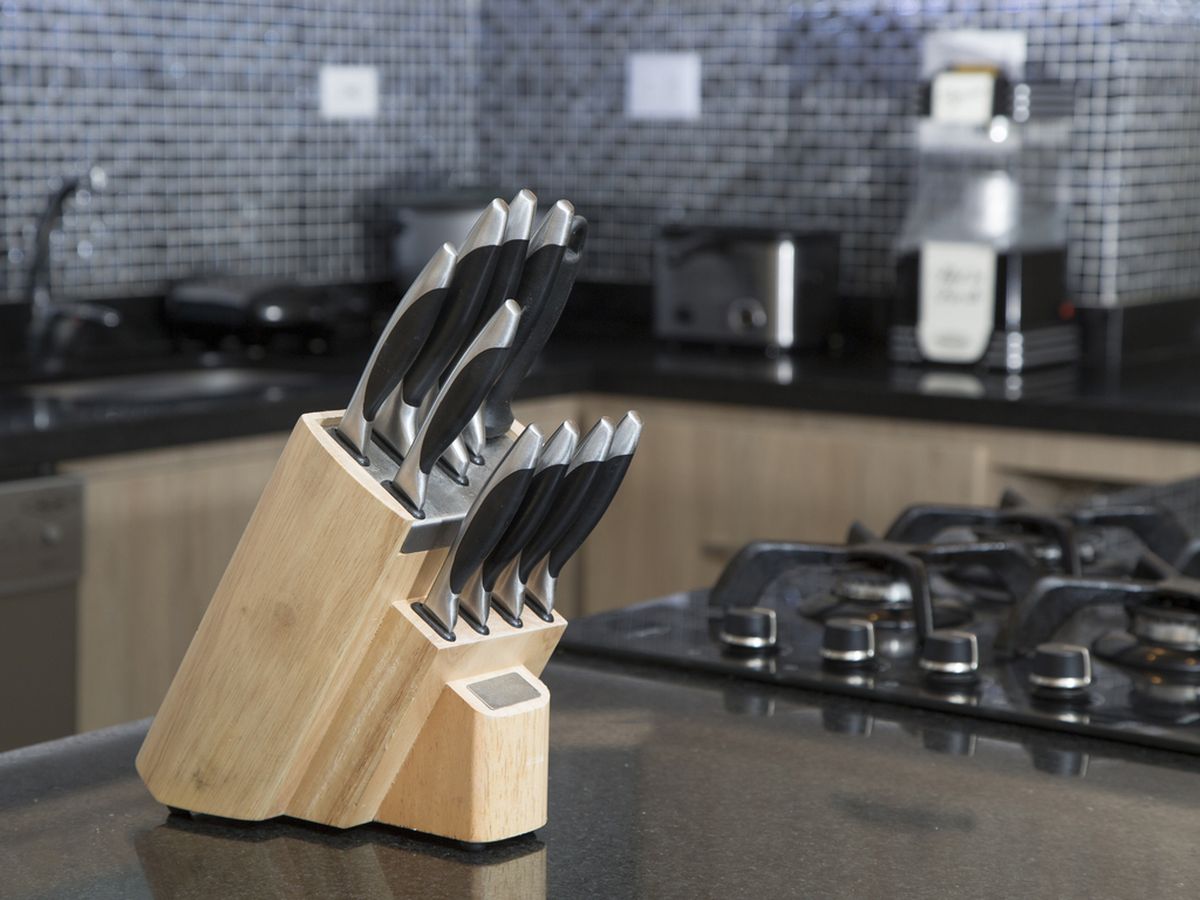
The content of the article
General purpose
A standard set aimed at solving the most common tasks in the kitchen. The kit includes:
- Chef's knife (German, French) - a real all-rounder with a curved blade and impressive weight. The wide and heavy blade copes with both chopping bone and chopping greenery with equal success. And faster cutting of vegetables without extra effort is ensured by the shape of the cutting edge, thanks to which the tool can be swung without lifting it from the board. The popular size is 20 cm, but there are also specimens from 15 to 30 cm long.

- Chef's knife (German, French) - a real all-rounder with a curved blade and impressive weight. The wide and heavy blade copes with both chopping bone and chopping greenery with equal success. And faster cutting of vegetables without extra effort is ensured by the shape of the cutting edge, thanks to which the tool can be swung without lifting it from the board. The popular size is 20 cm, but there are also specimens from 15 to 30 cm long.
- Paring knife with a straight or claw-like blade. Thanks to its modest size (6–10 cm), it is ideal for small or complex work. The small blade is equally convenient when peeling vegetables and fruits, as well as when peeling shrimp or decoratively cutting food.

- Utility knife - an auxiliary tool that often makes professional cooks smile. This product occupies an intermediate niche between the two above-mentioned varieties. It is too light to perform the tasks that a German chef can handle (chopping, grinding bones). At the same time, a long (10–18 cm) blade is not suitable for cleaning or neat figurative work.

- Bread knife - a blade with a serrated blade.The characteristic shape allows you to cut neat slices without crushing the soft loaf or crumbling the hard one. Length from 15 to 25 cm.

- Paring knife with a straight or claw-like blade. Thanks to its modest size (6–10 cm), it is ideal for small or complex work. The small blade is equally convenient when peeling vegetables and fruits, as well as when peeling shrimp or decoratively cutting food.
- Butter knife, which is considered to be a serving cutlery. Meanwhile, it is difficult to imagine making sandwiches without this tool with a wide and flexible blade. The blade with a rounded tip and a blunt (sometimes wavy) edge does an excellent job of evenly distributing soft cheese, jam, butter, mayonnaise and similar products across a slice of bread.

Universal
A characteristic feature of these knives is a large, wide and heavy blade, complemented by a handle that prevents finger contact with the working surface. This tool is equally convenient for chopping greens, cutting large pieces of meat, or preparing fish steaks for cooking.
We can safely call the following universals:
- Western chef's knife, the blade of which can be made in French or German styles. The first one is more direct. The second one has a pronounced bend in the blade, making it easier to swing the knife on the cutting board.

- Guyto (Japan) is not much different from the German and French station wagons, being their closest analogue.
- Santoku - another chef's knife created in the Land of the Rising Sun. It is smaller, lighter and sharper than the previously mentioned options, but copes with cutting meat, fish, poultry and vegetables just as well as they do.

- Kaidao (China) - an all-rounder with a remarkable blade shape. This is a real cleaver that has no doubt about its ability to cope with a large carcass or crush bones.
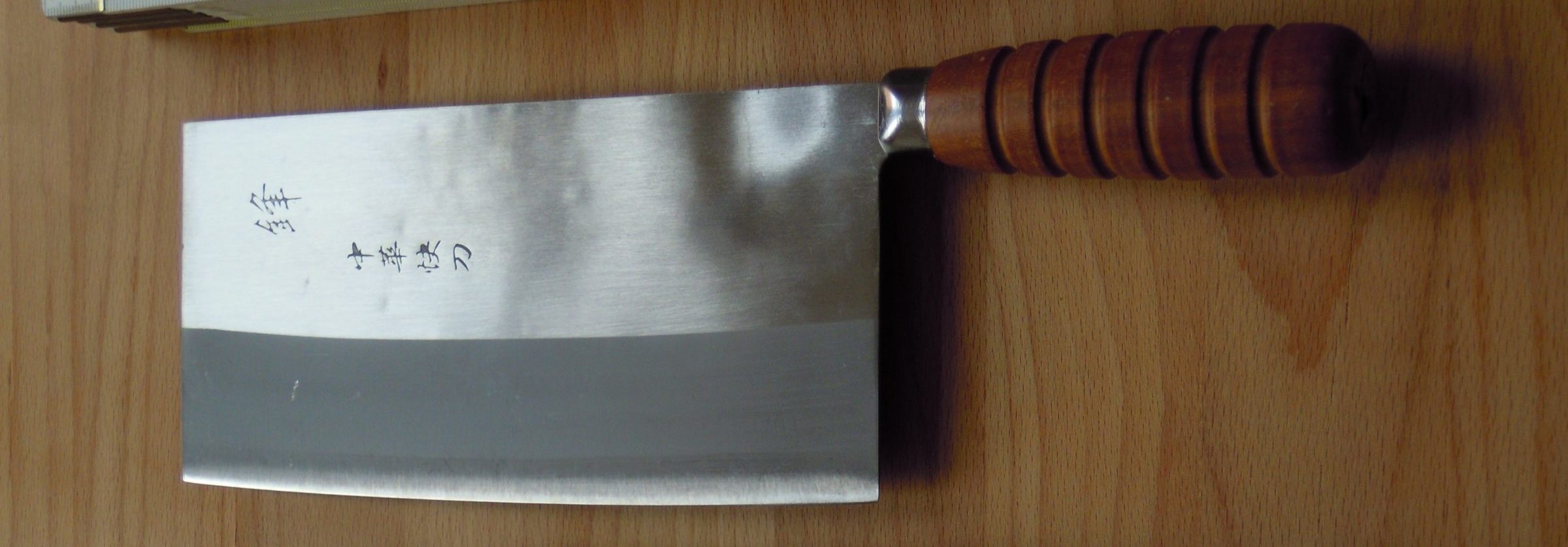
Meat
This group includes knives designed for working with poultry, meat, fish and even bones.Depending on the tasks performed, there are:
- Carving knife, length from 20 to 38 cm. Used for cutting thin pieces of pre-cooked meat or poultry. It differs from utility knives only in its thinner blade.

- Slicer. The characteristic features of the tool are a long flexible blade and a rounded tip. The functions are the same as those of a carving knife, but the task is performed with greater precision. Also suitable for slicing fish. A close analogue of a slicer is a ham knife, which can also be used to cut melons (watermelon, melon). Length 20–40 cm.
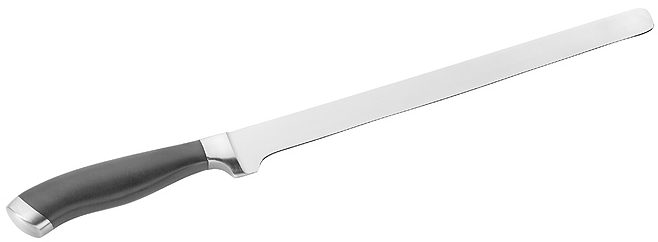
- Cleaver (hatchet) It is notable for its large and heavy blade, rectangular or widening towards the edge, and a massive butt. This tool is suitable for both chopping meat and chopping bones.
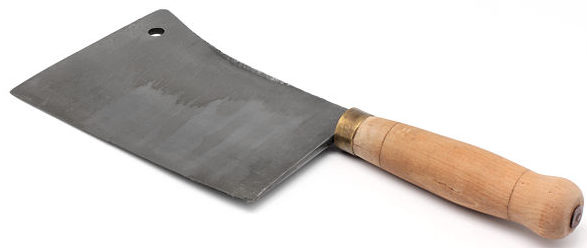
- Boning - used for cutting meat from bones. Characteristic features: a thin flexible blade with a length of 12 to 15 cm.

- Sirloin - an indispensable assistant when cutting fish. The blade is ideally suited for moving along the spine or under the skin of the carcass. Length - from 15 to 28 cm.

Cheese
- For soft cheese - a blade with large holes in the blade (between the cutting edge and the butt). This feature is aimed at reducing the area of contact between the product and the metal. This prevents the slices from sticking to the blade.

- For hard cheese - slicers with a forked tip, which is used instead of a fork when placing slices on a plate.

- For Parmesan. A short massive blade, adapted for breaking off portioned pieces from a very hard head.

Special
These knives are so numerous that their description is quite worthy of being included in a separate article. Therefore, for now we will limit ourselves to a visual acquaintance with the most common types.
Tour (removing peels and stains).

For decoration.
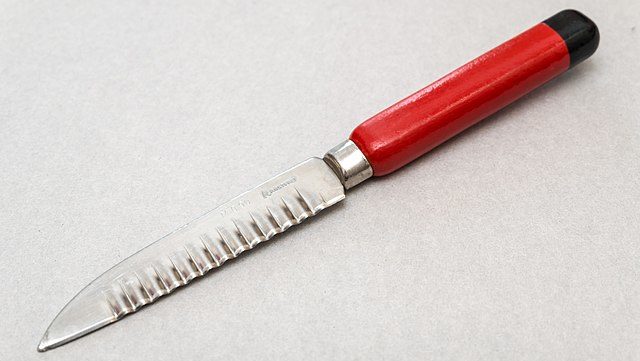
Knife saw (for frozen products).
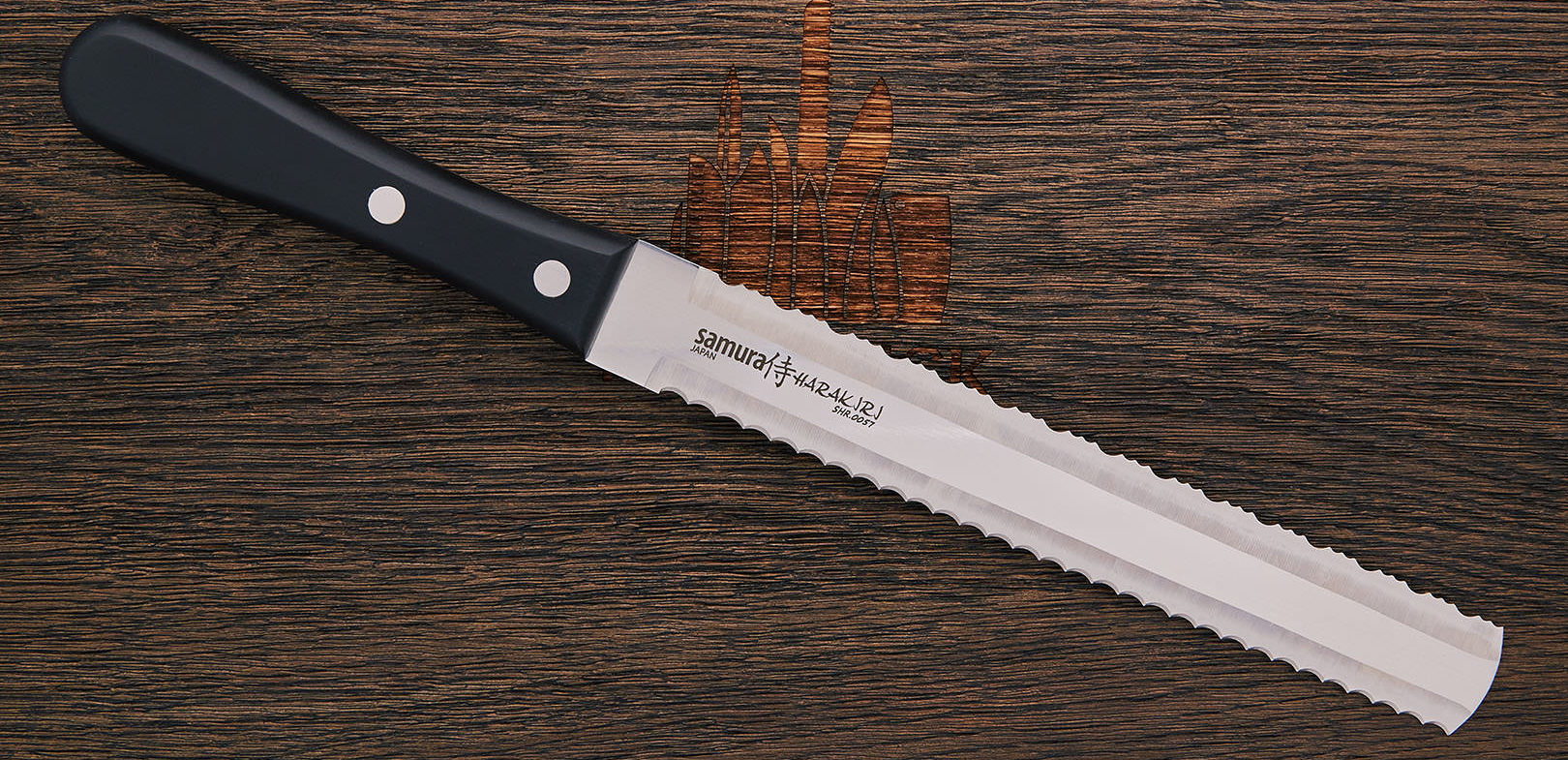
Deveiner (for cleaning shrimp).
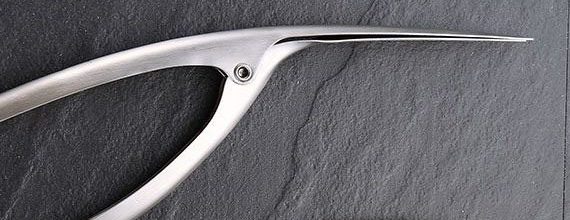
Oyster.
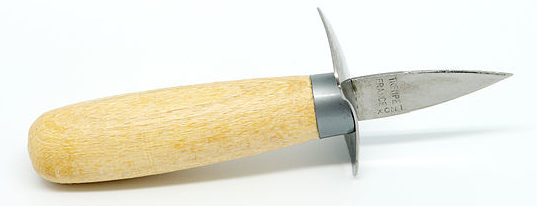
For grapefruit.
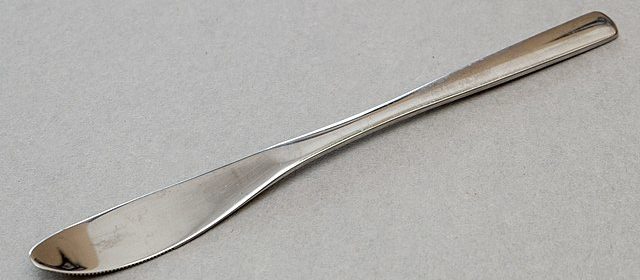
Tomato.

Mezzaluna.
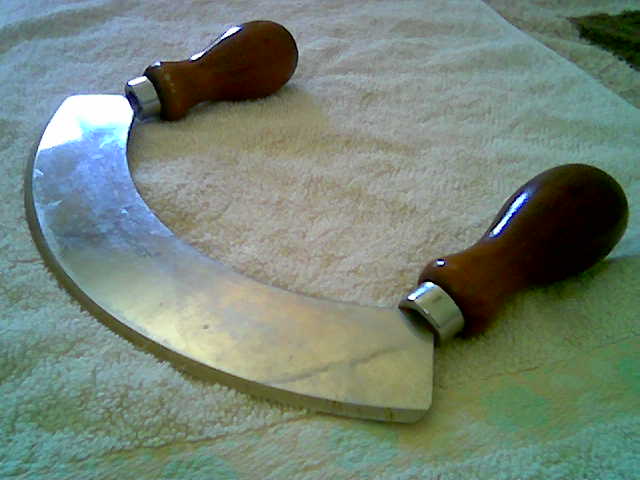
Let's take a closer look at this original version. Due to the characteristic shape of the blade, such a knife can also be called a crescent. Its main purpose is to chop herbs and garlic. However, such a “blade” is also used for chopping meat and poultry or for slicing pizza. The almost all-rounder comes from Italy and is sometimes able to surprise with the presence of two or three blades.
This concludes today’s excursion into the world of kitchen knives. If any of the options for such a useful tool have been undeservedly forgotten, please tell me about it in the comments.

